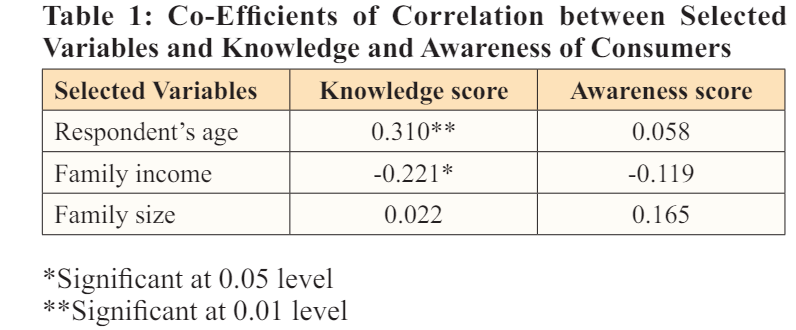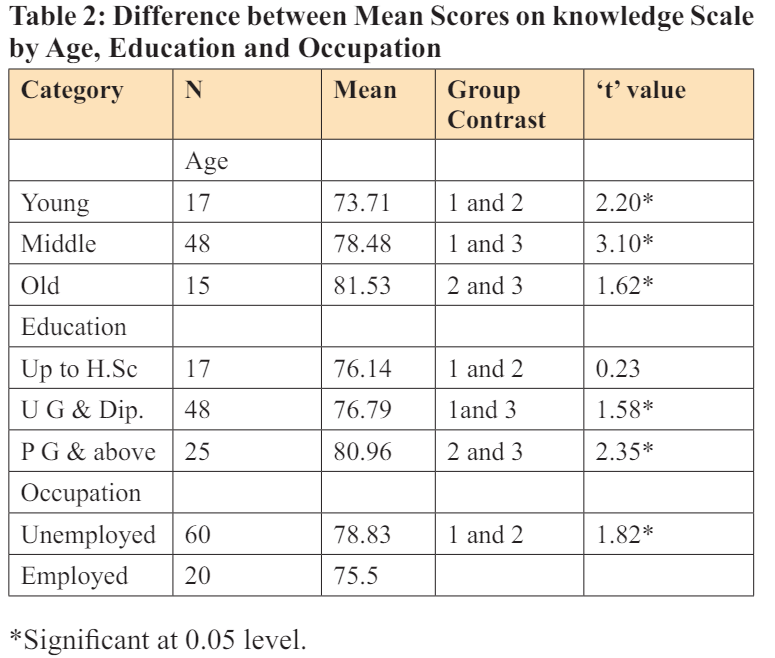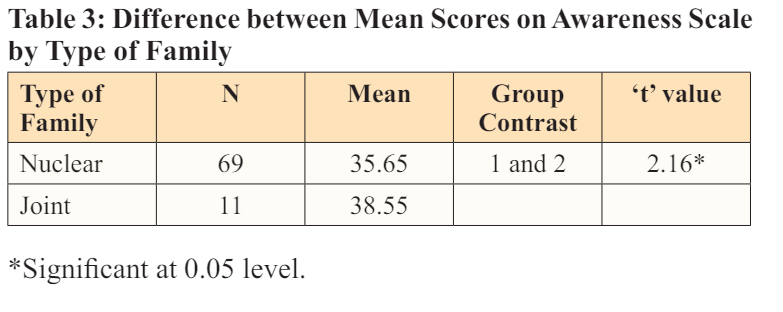Author(s): <p>Bhavna Gupta and V Vijaya Lakshmi*</p>
Consumer is the king in an economy and a sovereign. But in reality he/she is a sovereign without sovereignty (Wasu, 1987) because at present consumer is being bombarded with glamorous images, products and ideas of a good life. It is hard for the consumer to decide what to buy and where to draw line. The picture presented to him is fuzzy and fantasies world, which is propagating unlimited and untempered consumption. It is also the age of rapid technological and scientific advances, the consumer is hard put to discern what favours him and what puts him at risk. With such factors working against consumer interests, it is up to the consumers to equip themselves with knowledge of standardized products and keep pace with developments that affect their world.
Consumer’s right to safety is as vast in its purview as the market itself. It applies to all possible consumption patterns and to all goods and services. With the advent of the market economy and the rapid strides of science and technology, safety is being looked at as a pre-requisite quality in all products especially food products since food is the most important basic necessity. Hence Government of India has promulgated various consumer laws and acts for the protection of the consumer (Seth and Capoor, 1993) Apart from the laws and acts like Prevention of Food Adulteration(PFA) Act, Standard Weights and Measures Act, Drugs and cosmetics Act, Government had been indulging in formulating standardized marks like ISI, AGMARK and FPO which assures the products quality, safety and purity from any type of mal practice on adulteration. Review of literature revealed that some research studies done in this field were pertaining to the buying or purchasing behavior(Agarwal,1983 and Srinivasan, 1985) attitude towards certain marketing practices(Bhatia, 1977) consumer’s awareness about their rights and responsibilities(John, 1974 and Kosambi, 1986) and so on and so forth. But not much light was thrown on knowledge of consumers about food products with standardization marks and awareness regarding PFA Act. Hence, the present study was taken up with the following objectives:
For the present study descriptive research design with survey method was followed. Questionnaire schedule was used for data collection. It comprised of three sections. Section I comprised of questions regarding socio-economic and demographic information and section II contained the statements to assess the respondents’ knowledge regarding standardization marks like ISI, AGMARK and FPO on food products. Section III dealt with statements on awareness to assess the respondents regarding laws pertaining to food products i.e, PFA Act. Knowledge scale(KS) and Awareness Scale(AS) were developed and standardized through establishment of content validity and reliability. Reliability co-efficient values were 0.87 and 0.93 for KS and AS respectively. The sample selected for the study was from Pratapunj and Karelibaug areas of Vadodara city. Accidental sampling technique was used to select the sample comprised of 40 housewives each from two areas totaling to 80 housewives. Housewife was taken as a respondent since she does large extent of purchasing food products. Descriptive and inferential statistics employed were frequency, percentage, mean, standard deviation, co-efficient of correlation and analysis of variance. Whenever significant ‘F’ values were obtained‘t’ test was applied.
Respondent’s age was ranged from 20 to 78 years and mean age was 43.24 with SD of 10.88. About 60 per cent of the respondents were either undergraduates or UG diploma holders. Though majority was educated, only 25 per cent were employed. The mean size of the family was 3.9 with SD of 1.28 and majority were employed. The mean size of the family was 3.9 with SF of 1.28 and majority(86.3%) of them belonged to nuclear and medium size families with 4-6 members. The mean monthly family income was 14,674 with SD of Rs.7,272.
A descriptive rating scale was used to assess the knowledge of respondents regarding standardization marks on food products. A two- point continuum was used to measure the knowledge level by ascribing 2 and 1 scores for correct and incorrect answers. The possible range of scores was from 48 to 96. While the respondents obtained knowledge score ranged from 65 to 94. The mean score was found to be 78 with SD 7.3. About 43 per cent earned a score of 71 to 80, while 36.5 per cent earned a score of 81 and above.
About 66 and 59 per cent could identify the correct symbols of ISI and AGMARK respectively. Majority of the respondents knew that ISI was given by voluntary organization and AGMARK was given to few products in the market. About 64 per cent knew that standardization marks are not only present on export products but on domestic products too.
Awareness about PFA: A descriptive rating scale was constructed to know the awareness of respondents about PFA. Respondents were asked to answer yes if they are aware of it and a score of 2 was given. If they answered ‘no’, a score of 1 was given. Mean score was calculated separately for all the statements as well as for the entire scale.
The findings revealed that the respondents were aware of when food item with less weight than prescribed is sold, and when adulterated food causes injury to health, manufacture can get life imprisonment with fine (1.52), if they are given adulterated food product, they can get it tested in food laboratory and get pure product with compensation (1.50), the act ensures that food product is packed, prepared and stored under sanitary conditions and if diseased article is given, seller can be taken to the court (1.47).
However, respondents were not much aware of the facts, as mentioned in decreasing order, like PFA act prohibits the sale, manufacture, storage and distribution of adulterated and misbranded food item(1.36), PFA deals solely with food and PFA warns producers and sellers to ensure safety in the realm of food(1.31), a shopkeeper is punished for selling a product at high rates and whose expiry date is over (1.28), PFA is framed to prohibit adulteration of food products (1.23), one can go to court if he is given substandard food product(1.21), for giving inferior quality of flour or besan, a seller and producer can be punisher (1.18), and PFA is framed to fight against malpractice related to food (1.01).
The minimum and maximum scores earned by the respondents were 22 and 44. The mean awareness score was 36.1 with SD 4.22. About 77 per cent earned a score of 31 to 40 which clearly indicates that majority of the respondents were aware of PFA act.

Statistical analysis revealed that knowledge score was positively correlated with respondent’s age and negatively with family income( Table 1). It means, as one grows older, he/she gains more knowledge about the quality of the products and become a wise consumer due to the experience. On the other hand higher income respondents had less knowledge about the standardized products than lower income group probably because purchasing might be done by paid help.

The ‘t’ values computed for mean difference on the knowledge by age, education and occupation of the respondents were significantly different at 0.05 level (Table 2). Respondents with higher education i.e, post graduation and above were more knowledgeable regarding standardization marks on food products than their counter parts. It is interesting to note that employed respondents were less knowledgeable than that of unemployed respondents probably because employed be allotting the purchasing task to paid help due to lack time.
While awareness about PFA act by type of family was significantly different at 0.05 level. Mean awareness score of the respondents about PFA was relatively high in case of those who belonged to the joint families, which might be due to the presence of older generation in the family(Table 3)

It can be concluded from the research findings that old and highly educated housewives, seemed to have more knowledge about standardized food products than young and less educated ones, probably due to their exposure and experience in purchasing. However, employment status of the respondents and income of the family seem to influence their knowledge in a negative manner which may be due to the lack of time to insist on standardized food products while purchasing may be allocated to paid help. Similarly the joint families were more aware of PFA than their counter parts, since the older generation is staying with them who are more experienced about the quality of food products.
This implies that consumers need to be educated to make wise choices by rejecting sub standard products and decide to asset their rights. Both government and NGOs should operate in favour of consumers interests and encourage them to become responsible and wise buyers rather than impulsive buyers by protecting themselves from malpractices. Usually the common man considers law and court intervention is a difficulty option and involves a huge court fee or attorney’s fee. Where as in reality it doesn’t cost much and any aggrieved consumer can file written complaint with relevant details at any time. Hence consumer forums and voluntary organizations should make efforts to create awareness among consumers through consumer education programmes, seminars, workshops, debates, symposium etc. about the importance of certification marks, laws related to them and how consumers should seek the redressal by exercising their rights to protect themselves from various mal practices.
Contributions of authors: First author has collected the data. Second author helped in formulating the objectives, analyzing the data and writing the report.
